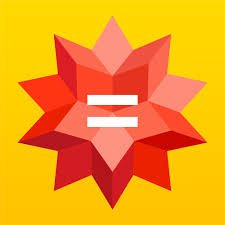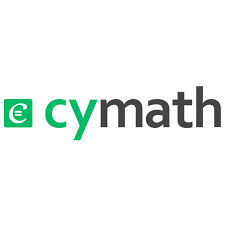Artificial Intelligence (AI) has rapidly evolved from a theoretical concept to a transformative tool across various fields, and mathematics is no exception. AI’s ability to process vast amounts of data, recognize patterns, and perform complex computations makes it an invaluable asset in solving mathematical problems. Whether it’s simplifying algebraic equations, proving intricate theorems, or optimizing real-world systems, AI is reshaping how we approach math—both in education and advanced research.
The integration of Top 10 AI For Math Problems is not just about automation; it’s about enhancing human capabilities. Traditional problem-solving methods often require extensive manual effort, but AI can accelerate these processes, providing insights that might take humans years to uncover. From assisting students in learning fundamental concepts to aiding researchers in groundbreaking discoveries, AI-powered tools are becoming indispensable in the mathematical landscape.
However, the rise of AI in mathematics also raises important questions. How reliable are AI-generated solutions? Can AI truly replicate the creativity and intuition of human mathematicians? As we explore the capabilities and limitations of AI in math, it becomes clear that the future lies in collaboration—where AI handles computation and pattern recognition, while humans focus on innovation and interpretation.
Artificial Intelligence has revolutionized the way we approach math problems, from basic arithmetic to advanced calculus. Below is a comprehensive list of powerful AI-powered math apps, along with detailed explanations of their features, strengths, and limitations.
1. Photomath

Best for: Step-by-step math problem solving (Algebra, Calculus, Trigonometry)
Features:
- Camera-Based Scanning: Users can take a photo of a handwritten or printed math problem, and the app instantly provides a solution.
- Step-by-Step Explanations: Unlike basic calculators, Photomath breaks down each solution into detailed steps, helping users understand the reasoning.
- Interactive Graphs: For functions and equations, the app generates visual graphs to aid comprehension.
- Supports Advanced Math: Handles arithmetic, algebra, calculus, trigonometry, and even word problems.
Limitations:
- Struggles with extremely complex or abstract theoretical math.
- Requires clear handwriting or typed text for accurate scanning.
Availability: iOS, Android (Free with premium features)
2. Wolfram Alpha

Best for: Advanced Mathematics, Symbolic Computation, and Scientific Calculations
Features:
- Computational Knowledge Engine: Unlike standard calculators, Wolfram Alpha solves problems using AI-driven symbolic computation.
- Step-by-Step Solutions (Pro Version): Provides detailed explanations for integrals, derivatives, matrix operations, and more.
- Broad Subject Coverage: Beyond math, it solves physics, chemistry, engineering, and statistics problems.
- Natural Language Input: Users can type questions in plain English (e.g., “What is the derivative of x²?”).
Limitations:
- The free version has limited functionality; full step-by-step solutions require a Pro subscription.
- Not ideal for quick, simple arithmetic—better suited for advanced users.
Availability: Web, iOS, Android (Free with premium options)
3. Microsoft Math Solver

Best for: Free, All-in-One Math Problem Solver
Features:
- Multiple Input Methods: Supports typing, handwriting, and photo scanning.
- Interactive Solutions: Provides explanations, graphs, and video tutorials for many problems.
- Covers a Wide Range of Topics: Arithmetic, algebra, calculus, statistics, and linear algebra.
- Integration with Bing & Edge: Can be used directly in Microsoft’s search engine and browser.
Limitations:
- Less advanced than Wolfram Alpha for higher-level math.
- Some users report occasional errors in handwritten recognition.
Availability: iOS, Android, Web (Free)
4. Socratic by Google

Best for: Homework Help & Conceptual Learning
Features:
- AI-Powered Explanations: Uses Google’s AI to scan problems and provide detailed answers from trusted sources.
- Multi-Subject Support: Math, science, history, and literature.
- Visual Learning Aids: Includes videos, definitions, and concept breakdowns.
- Best for Students: Helps with understanding rather than just providing answers.
Limitations:
- Not as strong in advanced university-level math.
- Relies on external sources, so accuracy depends on available references.
Availability: iOS, Android (Free)
5. Symbolab
Best for: Step-by-Step Calculus, Algebra, and Equation Solving
Features:
- Specialized in Advanced Math: Excels in calculus, linear algebra, and differential equations.
- Interactive Graphing: Plots functions and provides analytical solutions.
- Practice Problems: Offers quizzes and worksheets for self-study.
- Subscription-Based Pro Features: Includes full step-by-step solutions and ad-free usage.
Limitations:
- Free version has ads and limited explanations.
- Some features require a paid subscription.
Availability: Web, iOS, Android (Free with premium upgrade)
6. Mathway
Best for: Quick Answers to Math Problems
Features:
- Instant Solutions: Solves algebra, trigonometry, calculus, and statistics problems in seconds.
- Basic vs. Premium: Free version gives answers only; paid version provides steps.
- User-Friendly Interface: Simple input method with a calculator-like design.
Limitations:
- Free version lacks explanations, pushing users toward a subscription.
- Less detailed than Wolfram Alpha or Symbolab.
Availability: Web, iOS, Android (Freemium)
7. Cymath
Best for: Algebra & Calculus Problem Solving
Features:
- Focuses on Algebra & Calculus: Strong in solving equations, derivatives, and integrals.
- Free Step-by-Step Solutions: Unlike Mathway, it provides some explanations for free.
- Simple Input: Users can type problems directly or use the camera.
Limitations:
- Limited scope compared to Wolfram Alpha or Symbolab.
- Some advanced topics require the premium version.
Availability: Web, iOS, Android (Freemium)
8. Gauthmath (Now Gauth)

Best for: Live Tutoring + AI Math Help
Features:
- AI + Human Tutors: Combines AI solutions with optional live expert help.
- Covers K-12 & College Math: Good for school and early university-level problems.
- Fast Responses: AI solves problems quickly, while tutors provide deeper explanations.
Limitations:
- Human tutoring requires credits (paid).
- AI sometimes struggles with highly complex proofs.
Availability: iOS, Android (Freemium)
9. Maple Calculator
🔗 https://www.maplesoft.com/products/MapleCalculator/
Best for: University-Level Math & Engineering
Features:
- Linked to Maple Software: Powerful computational engine for advanced math.
- Handles Symbolic Math: Solves integrals, differential equations, and matrix operations.
- Graphing & Visualization: Helps plot 2D and 3D functions.
Limitations:
- Steeper learning curve than simpler apps like Photomath.
- Some features require familiarity with Maple’s syntax.
Availability: iOS, Android (Free with in-app purchases)
10. Brainly
Best for: Crowdsourced Math Help
Features:
- Community-Driven Solutions: Users post questions, and others (or AI) provide answers.
- Covers All Subjects: Math, science, history, and languages.
- Free & Paid Options: Some answers are behind a subscription.
Limitations:
- Accuracy varies since answers come from users.
- Not as reliable as dedicated math-solving AI.
Availability: Web, iOS, Android (Freemium)
Final Thoughts: Which AI Math App Should You Use?
- For Quick Answers: Mathway, Photomath
- For Learning Concepts: Socratic, Microsoft Math Solver
- For Advanced Math: Wolfram Alpha, Symbolab, Maple Calculator
- For Tutoring Help: Gauthmath, Brainly
Each app has strengths depending on the user’s needs—whether it’s quick homework help, deep learning, or professional-grade computations. The best choice depends on the complexity of the problem and whether step-by-step explanations are needed
How AI Solves Math Problems
Machine Learning Approaches
Machine learning (ML) has proven highly effective in solving structured math problems. Supervised learning models, trained on vast datasets of equations and solutions, can predict answers to algebraic, calculus, and statistical problems. For example, neural networks can learn to solve differential equations by recognizing patterns in previously solved examples. Reinforcement learning, on the other hand, is particularly useful in optimization problems, where AI systems iteratively improve solutions based on reward mechanisms—such as finding the shortest path in logistics or maximizing efficiency in financial models.
Symbolic AI and Theorem Proving
Unlike numerical machine learning, symbolic AI focuses on manipulating mathematical symbols and logic. Automated theorem provers like Lean and Coq use formal logic to verify mathematical proofs, reducing human error in complex derivations. Meanwhile, tools like Wolfram Alpha employ symbolic computation to break down problems into solvable components, providing step-by-step explanations. These systems are particularly valuable in abstract mathematics, where precision is critical.
Neural Networks and Deep Learning
Recent advancements in deep learning have enabled AI to tackle more open-ended math problems. Transformer-based models like GPT-4 and Google’s Minerva can interpret and solve math word problems by understanding context and generating logical steps. Graph Neural Networks (GNNs) are also gaining traction in geometry, where they analyze spatial relationships to solve problems involving shapes, angles, and proofs. These models demonstrate that AI is not just a calculator but a reasoning tool capable of handling diverse mathematical challenges.
Applications of AI in Mathematics
Education & Tutoring
AI-powered tutoring systems are revolutionizing math education by offering personalized learning experiences. Apps like Photomath and Socratic allow students to scan problems and receive instant solutions with detailed explanations. Adaptive learning platforms, such as Khan Academy, use AI to adjust difficulty levels based on a student’s progress, ensuring optimal learning efficiency. These tools make math more accessible, helping learners overcome frustration and build confidence.
Scientific Research
In advanced research, AI is accelerating discoveries by identifying patterns and formulating conjectures. The Ramanujan Machine, for example, uses algorithms to generate hypotheses in number theory, some of which have led to new mathematical insights. AI is also aiding in cryptography by optimizing encryption algorithms and detecting vulnerabilities. By automating tedious computations, researchers can focus on higher-level theoretical developments.
Industry & Engineering
Beyond academia, AI is solving real-world mathematical challenges in industries like logistics, finance, and engineering. Optimization algorithms enhance supply chain efficiency, while AI-driven models solve complex differential equations in physics simulations. Financial institutions use machine learning for risk assessment and algorithmic trading, relying on mathematical models to predict market trends. These applications demonstrate how AI bridges the gap between abstract math and practical problem-solving.
Challenges and Limitations
Accuracy & Interpretability Issues
Despite its strengths, AI is not infallible. Neural networks often function as “black boxes,” making it difficult to understand how they arrive at solutions. Errors can occur, especially in problems requiring deep reasoning. Symbolic AI, while more transparent, may struggle with ambiguities in word problems. Ensuring AI-generated solutions are both accurate and explainable remains a significant hurdle.
Data Dependency & Training Constraints
AI models require vast amounts of high-quality data to perform effectively. In mathematics, where problems can be highly abstract, obtaining sufficient training datasets is challenging. Overfitting—where models perform well on known problems but fail on new ones—is another concern. Developing robust AI systems that generalize across diverse mathematical domains is an ongoing research focus.
Human vs. AI Collaboration
While AI excels at computation, it lacks the intuition and creativity of human mathematicians. Many breakthroughs in math come from unconventional thinking, which AI cannot yet replicate. The ideal scenario is a collaborative approach, where AI handles repetitive tasks and humans guide exploration and innovation. The question of whether AI could ever replace mathematicians remains open, but for now, synergy between the two is the most promising path forward.
Future of AI in Mathematics
Advances in AI Math Solvers
Future AI systems will likely integrate multimodal learning, combining visual, symbolic, and textual reasoning to solve problems holistically. Self-learning algorithms could reduce dependency on labeled datasets, enabling AI to tackle entirely new problem types. As models become more sophisticated, they may even contribute to unsolved mathematical conjectures, pushing the boundaries of human knowledge.
Integration with Quantum Computing
Quantum computing promises to revolutionize AI’s mathematical capabilities. Quantum machine learning could solve currently intractable problems in seconds, such as large-scale optimization or prime factorization. AI may also assist in designing quantum algorithms, creating a feedback loop that accelerates advancements in both fields.
Ethical and Societal Implications
As AI becomes more prevalent in math, ethical concerns arise—particularly in education, where over-reliance on AI could hinder critical thinking. Detecting AI-generated solutions in academic settings will be crucial to maintaining integrity. On the positive side, AI can democratize math education, providing high-quality tutoring to underserved communities worldwide.
Conclusion
AI’s role in mathematics is undeniably transformative, offering unprecedented speed and efficiency in problem-solving. From classrooms to research labs, AI-powered tools are enhancing learning, discovery, and real-world applications. Yet, the technology is not without limitations—accuracy, interpretability, and the need for human oversight remain key challenges.
The most exciting prospect lies in the collaboration between human intellect and machine precision. AI can handle computation and pattern recognition, freeing mathematicians to explore deeper theoretical questions. Rather than replacing human expertise, AI serves as an amplifier, unlocking new possibilities in mathematical exploration.
As the field evolves, the future will likely see even tighter integration between AI and mathematics, leading to breakthroughs we can only begin to imagine. The journey has just begun, and the synergy between human creativity and artificial intelligence promises to redefine what’s possible in the world of math.









